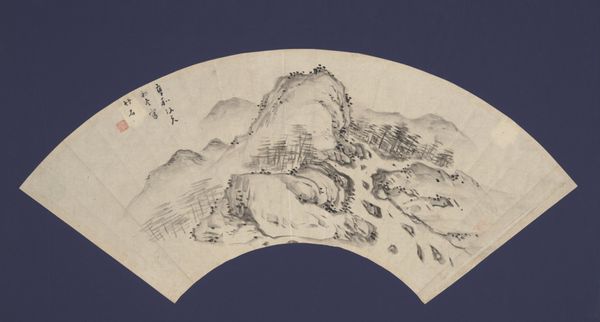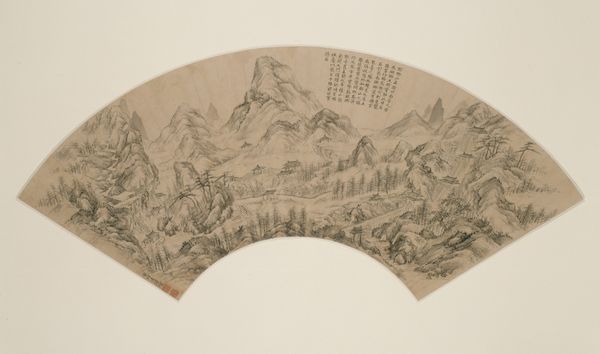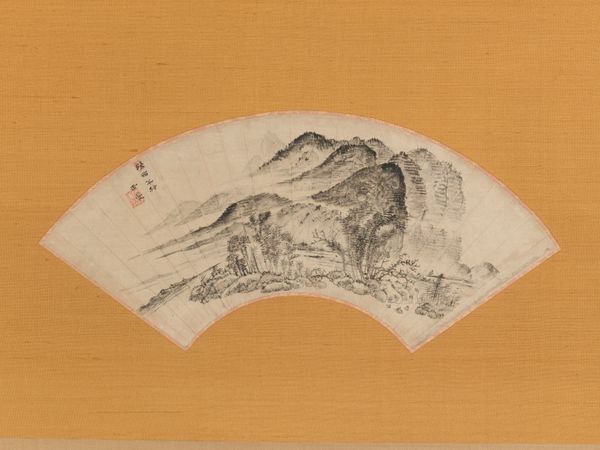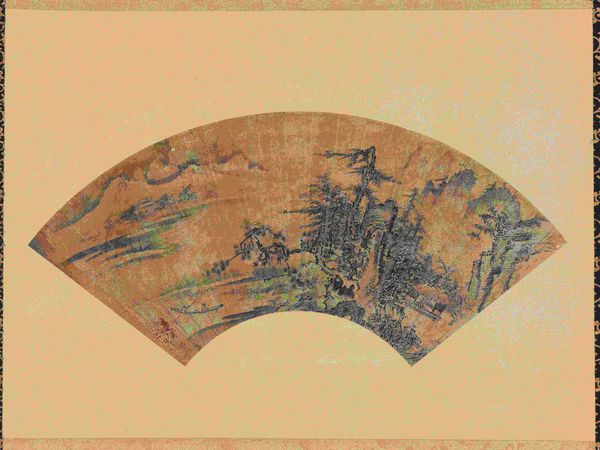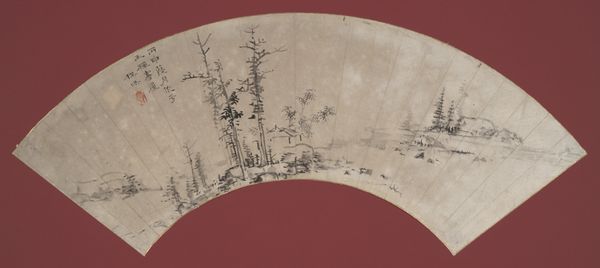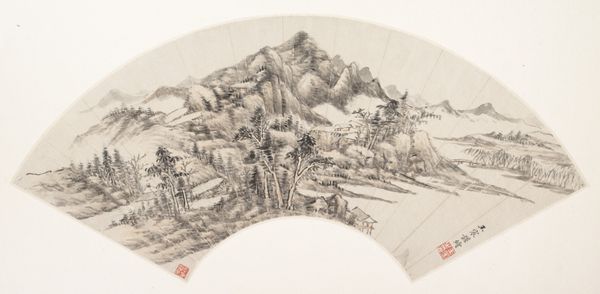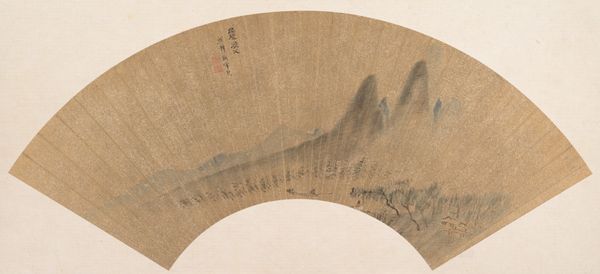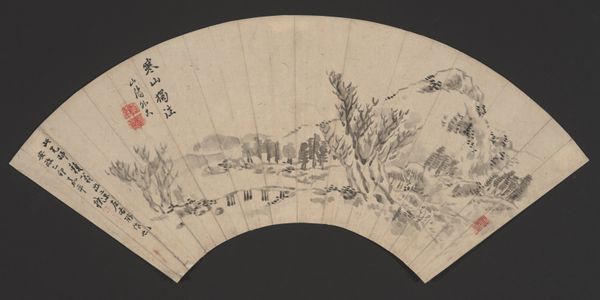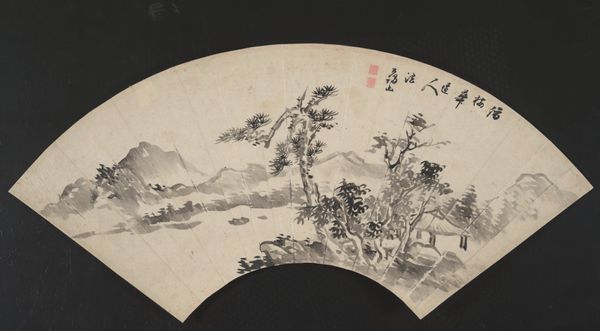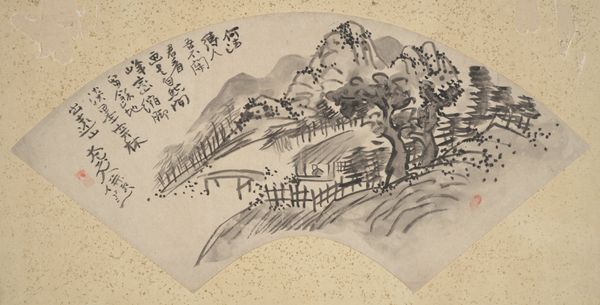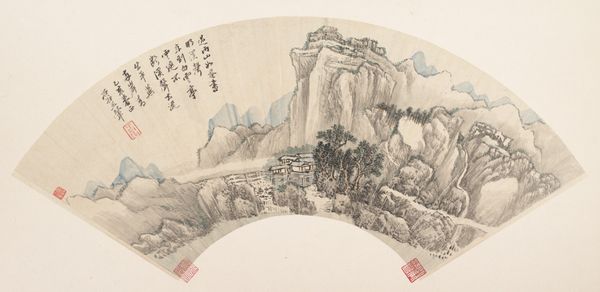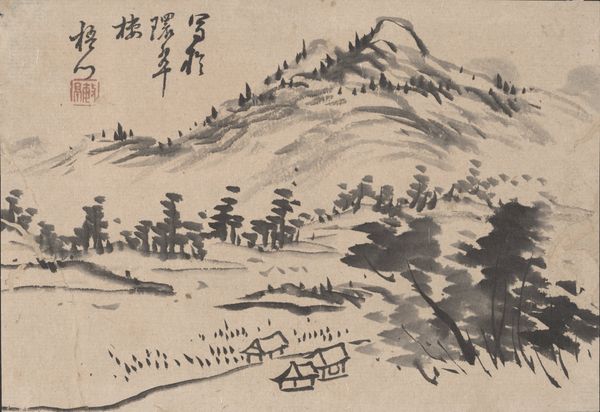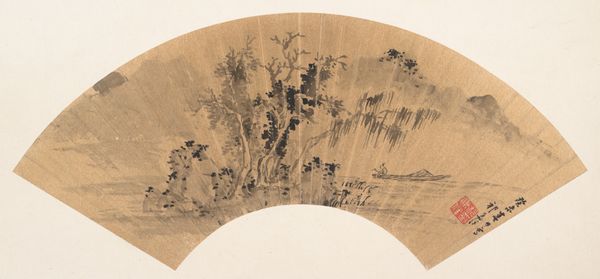
painting, paper, ink
#
painting
#
asian-art
#
landscape
#
ukiyo-e
#
japan
#
paper
#
ink
#
calligraphy
Dimensions: 7 5/8 × 18 in. (19.37 × 45.72 cm) (sheet)12 15/16 × 21 15/16 in. (32.86 × 55.72 cm) (mount)
Copyright: Public Domain
Editor: This is Yanagawa Kōran's "Landscape," dating back to the 19th century. It's ink and color on paper, done in the shape of a fan. I’m immediately drawn to the simplicity of the ink strokes. What does this piece suggest to you? Curator: From a materialist perspective, the choice of a fan as the medium is crucial. Consider its social context. Fans were both functional objects and canvases for artistic expression, circulating within a specific economy of gifting and social exchange. This challenges a separation of art and commodity, because the art itself it also embedded with purpose, not necessarily separated like other forms of painting. How does the knowledge of it being a fan shift your viewing experience? Editor: Knowing that, it feels more... personal, like a functional item elevated to art. So, who would have been making and using such an artwork? Curator: Ukiyo-e artists like Kōran often collaborated with artisans, blurring the lines between high art and craft. Examining the production process - the paper-making, the ink preparation, the printing, possibly the collaboration with woodblock cutters if this was based on a print – reveals the complex web of labor involved in creating this "simple" landscape. We could analyze the calligraphy not just for its aesthetic quality but for what information the text shares to the audience regarding cultural identity, and artistic references. Considering the labor and means of production enriches our appreciation, wouldn’t you say? Editor: Absolutely. I hadn't thought about all the different hands involved, but that definitely deepens my understanding of the piece. Thinking of the ink, paper, calligraphy and even the object itself all have significant production processes that help explain the artist's culture, style, and vision. Curator: Exactly! This kind of analysis encourages us to look beyond individual genius and understand art as a product of collective effort and material conditions. It's important to realize that the work relies more heavily on its process than just the final outcome.
Comments
No comments
Be the first to comment and join the conversation on the ultimate creative platform.
